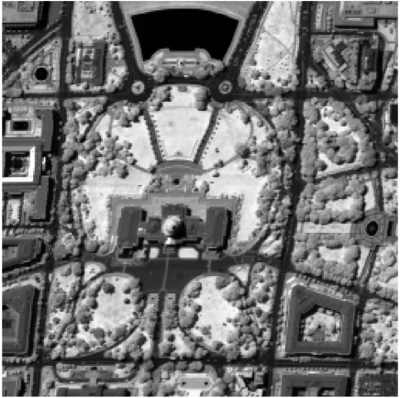Inverse problems in imaging
Inverse problems and optimisation
Image restoration:


In our group we focus on two specific applications that are biomedical imagery and hyperspectral imagery. Variational methods involving non-smooth criterion favor the design of solution that can be sparse after some transform and/or satisfying several other constraints. The major challenge is to design such a transform or constraints in order to facilitate the analysis we want to achieve. For instance, in structured illumination microscopy we aim at reconstructing the high resolution image in order to identify accurately actin and microtubes, molecules or vesicles. On the other hand, in application involving hyperspectral imagery, we have to design regularization terms allowing to take into account the correlations between the different hyperspectral bands without increasing significantly the computational cost.
Non-stationarity and optimisation:
One of the bottlenecks of EMD is the so-called “sifting” process, an inner loop in the algorithm aimed at forcing the extracted modes to be locally zero-mean, but for which no convergence guarantee is given, nor well-established stopping criterion can be fixed. Considering what makes the difference, at each step of the decomposition, between a mode and its associated residue (namely, a zero-mean fast oscillation as opposed to a non zero-mean, slower evolution), it has been proposed to achieve the disentanglement within the framework of constrained optimization. This offers numerous possibilities which clearly leaves room for a number of improvements and extensions: constrain the trend to belong to a specific function space (e.g., a splines space), impose constraints on the extrema in order to impose the signal to live in a specific space, constrain separately the trend and the IMFs in order to limitate sampling effects, impose quasi-orthogonality between IMFs, deal with additional constraints such as positivity or support.
Change-point detection and segmentation for regularity estimation:


For biomedical data as well as for analysis texture encountered in experimental physics, analysis and characterization may be done with regularity estimation. However, analysis such a regularity often encounter a practical difficulty: is the parameters estimated on a part of the signal are coherent with parameters estimated on another part of the signal. The question behind this, is the change-detection problem and similarly for image processing detect area with similar regularity. The group is interesting to adress on-the-fly multivariate change-point detection in a view of medical and physics applications. Several research axis result from these questions:
- revisit variational formulation involving total-variation penalization for dealing with multivariate purpose,
- design multivariate on-the-fly algorithm,
- estimate regularization parameter involved in the minimization formulation in order to estimate correctly the number and the localization of the change-points,
- use the tools that have been developed for real applications in biology and physics.






